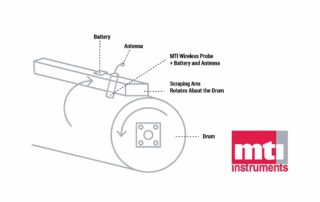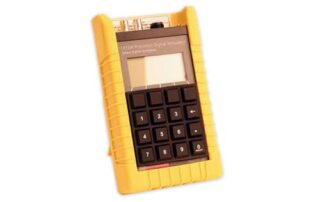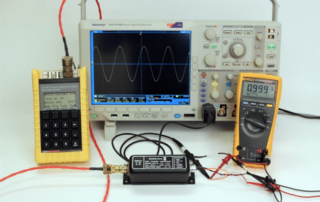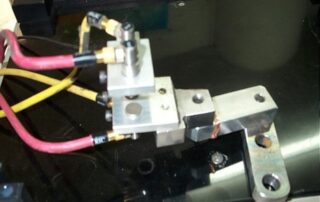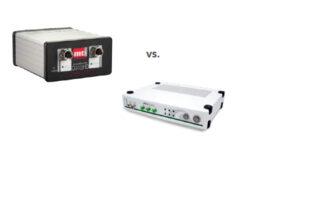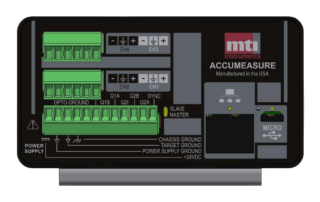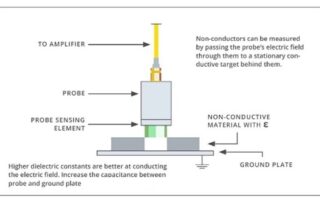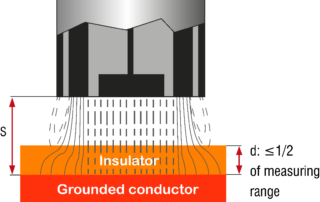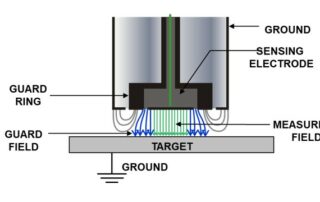Blogs
Capacitance Probes Measure Gaps in Rotating Environments
Capacitance Probes Measure Gaps in Rotating Environments Textiles, Industrial Optimizing Performance of Rotating Cylinders Gap Description [Application Note 72518] Sensor environments are not always ideal. Across the various Gap sensor applications conditions may vary drastically. Some setups may have requirements of miniaturization, and others of wireless signal propagation. In rotating environments where cables cannot go, often there is a need for both. Problem Traditional sensing solutions can’t be used in environments requiring wireless propagation such as inside a rotating body. In these situations, the size and power requirements restrict the [...]
Signal Generator Simulates Gas Turbine Speed Signals
Signal Generator Simulates Gas Turbine Speed Signals Aviation, Power Generation Simulation of Speed Signals Amplitude, Displacement Description [Application Note 61318] Gas turbine engines are complex machines comprised of two rotating sections, generally referred to as the low pressure compressor (N1) and the high pressure compressor (N2). These turbine sections feature separate shafts that produce unique tachometer signals. Gas turbine engines have multiple rotating sections generally referred to as the low pressure compressor (N1) and the high pressure compressor (N2). These turbine sections have separate shafts that produce unique tach [...]
Signal Generator Tests Charge Amplifier Gain, Frequency Response
Testing Charge Amplifier Gain and Frequency Response with a Signal Generator Aviation/Aerospace, Industrial, Power Generation, Research & Development Charge Amplifier Gain and Frequency Response Testing Amplitude (Acceleration, Vibration, Pressure) Description [Application Note 40518] Piezoelectric transducers produce small electrical charges in response to pressure. Their sensitivity, ruggedness, and stability at high temperatures make them an essential building block of many accelerometers and pressure sensors. Applications include turbine vibration measurement (accelerometers) and combustion dynamics monitoring (pressure sensors). Typically, the high-impedance charge output produced by a piezoelectric transducer must be conditioned and amplified [...]
Capacitance Sensors Track Brake Rotor Thickness Variation
Capacitance Sensors Track Brake Rotor Thickness Variation Automotive, Aviation/Aerospace Brake Rotor Testing & Manufacturing Displacement, Amplitude Description [Application Note 51018]Today’s cars and trucks offer unprecedented fuel efficiencies and handling characteristics – thanks, in part, to vehicle lightweighting. Applied to all vehicle components, lightweighting lowers stress and strain to improve mileage and boost overall performance.In keeping with this trend, today’s brake rotors are thinner and lighter than those of just a few years ago. In addition, many feature cooling vents to further improve performance. These changes, however, reduce available braking surface, forcing [...]
MTI’s Accumeasure HD Amplifier vs. SmarAct’s PicoScale Interferometer
MTI's Accumeasure HD Amplifier vs. SmarAct's PicoScale Interferometer Research & Development Piezoceramic, 1-3 Pzt / Polymer Composite And Pvdf Film Amplitude Description This application note compares MTI's Accumeasure HD amplifier to SmarAct's Picoscale interferometer in terms of resolution and accuracy for very small displacement measurements. Specifically, this comparison focuses on minimum expected resolution and the effects of noise on accuracy. High resolution interferometers are widely regarded as the instrument of choice for the type of measurements described in this application note, but MTI's technology provides exceptional accuracy and stability. Moreover, [...]
Testing for Connector Failure Due to Vibration or Shock
Testing for Connector Failure Due to Vibration or Shock Mobile Communications Equipment Needs Reliable Connectors That Will Not Disconnect with Shock or Vibration Introduction A large multinational company approached MTI to provide a sensor capable of measuring displacement that also wouldn’t load the target (connector). Shock and vibration testing would span 2-15G and the target connectors were very small. Application MTI’s 2100 optical displacement sensor system is ideal for this kind of application because very small probes can be used and they measure displacement via reflected light. Of course, reflected light does [...]
Connecting Encoders to MTI’s Digital Accumeasure
Connecting Encoders to MTI's Digital Accumeasure MTI's Digital Accumeasure D has the ability to accept one or two digital quadrature encoders. The encoders can be linear slide-type or rotary. Digital encoders allow for tracking the position of capacitive probes such that you can synchronize a probe's position with the probe's displacement data. Two common examples are: Rotary shaft runout: shaft (radial) displacement vs. angular encoder position X/Y position of probes measuring wafer thickness (map wafer thickness) Accumeasure software (basic and measurement) allows the display of instantaneous encoder counts as well as probe displacement data; however, [...]
Foam Density Measurement: Capacitance Sensors vs. Nuclear Gauges
Foam Density Measurement: Capacitance Sensors vs. Nuclear Gauges Foam Density Measurement Manufacturing EV Battery Production Thickness, Distance This application note from MTI Instruments compares two technologies for measuring foam density: capacitance sensors and nuclear gauges. It examines the basic operating principles of each technology and explains why capacitance measurement is recommended for in-line measurement during foam manufacturing. Capacitance Sensors Capacitive probes are non-contact devices that use electric fields to measure foam density. In combination with a thickness value, a density measurement may be calculated. These probes consist of a capacitance [...]
Thickness Measurement of Dielectric Materials
Thickness Measurement of Dielectric Materials Manufacturing EV Battery Production Thickness, Distance --- Description --- Introduction Many applications, both in manufacturing and research, require precise material thickness measurements. This becomes especially difficult if the material is moving, is non conductive and/or translucent to clear. The specifics of your application may make accurate measurements difficult; many circumstances prohibit contact measurement, and make laser measurements difficult or impossible, for example with thin clear materials such as glass, sapphire, plastic . In cases such as these, capacitance measurement provides a highly accurate and cost-effective solution. [...]
Comparing Non-Contact Sensors: Capacitive vs. Eddy Current Sensors
Comparing Non-Contact Sensors: Capacitive vs. Eddy Current Sensors Comparing Non-Contact Sensors: Capacitive vs. Eddy Current Sensors Manufacturing EV Battery Production Thickness, Distance This application note from MTI Instruments compares two types of non-contact sensors: capacitive and Eddy current. It describes their basic operating principles, includes a quick comparison table, and offers recommendations for use. Capacitance Sensors: Basic Operating Principles Capacitive probes use electric fields to measure the distance from the sensor face to the target surface. A guard ring around the capacitive sensor in the probe steers the direction of [...]

